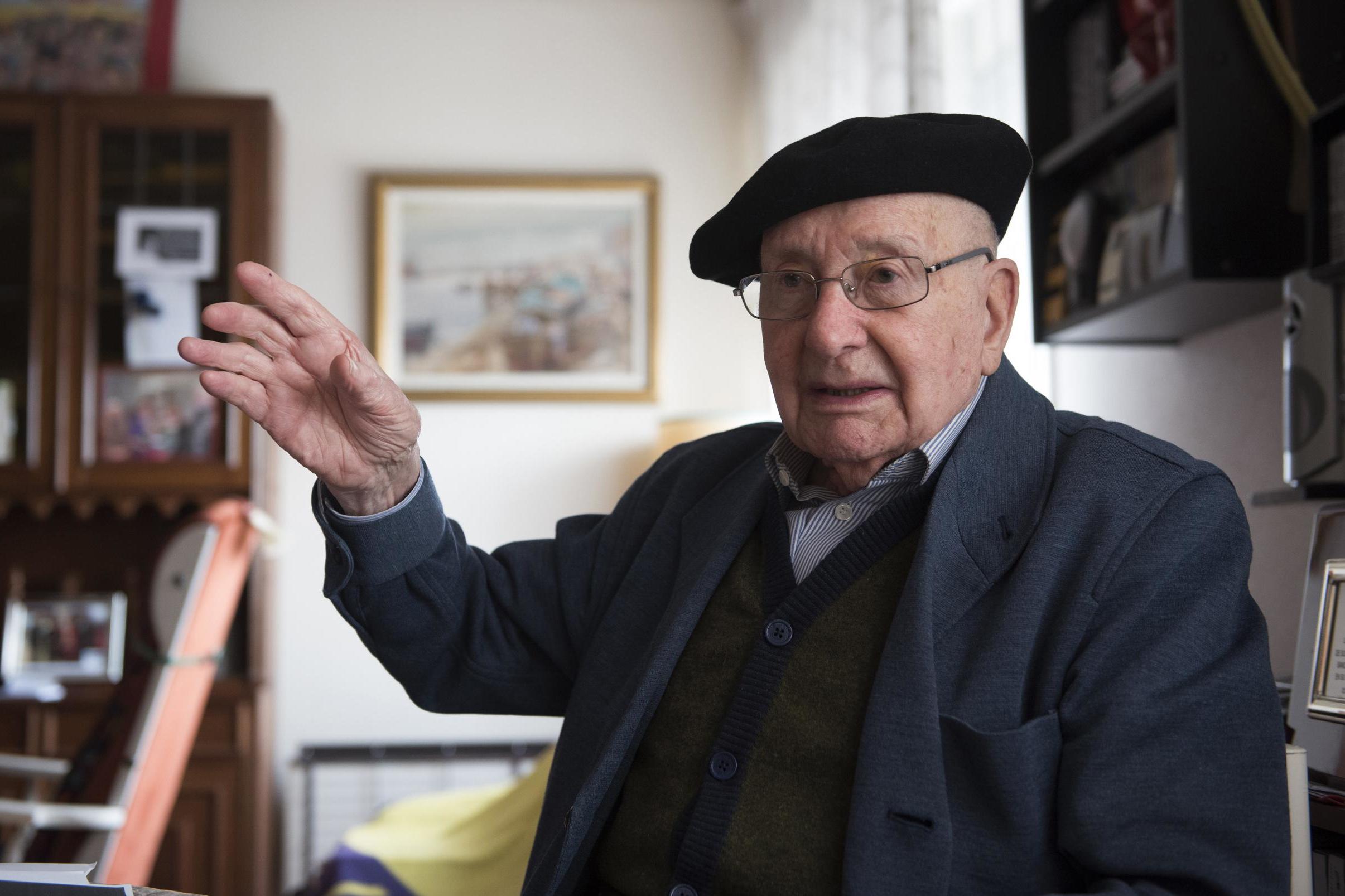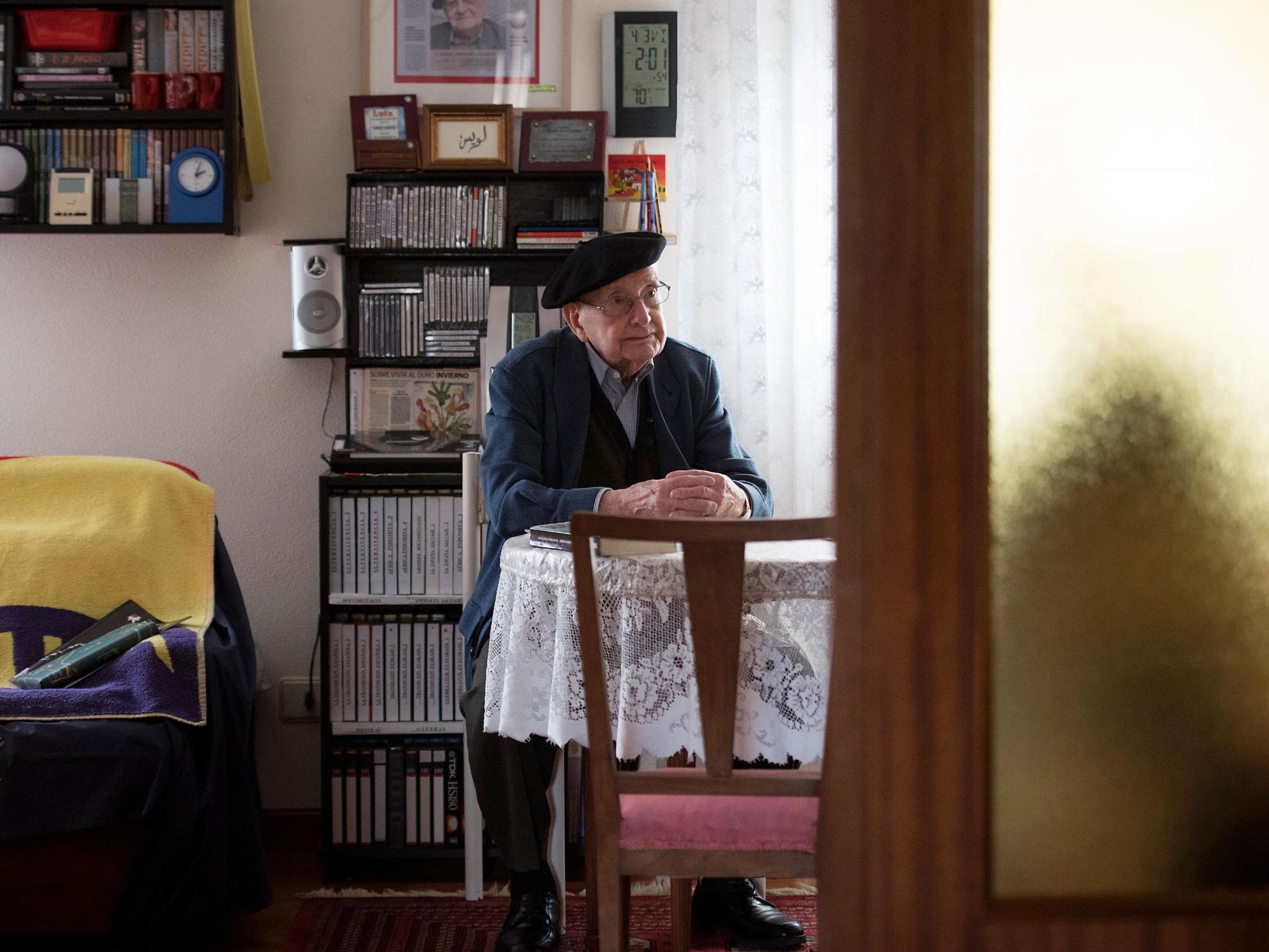Luis Ortiz Alfau: Spanish civil war veteran who survived the bombing of Guernica
He said he never fired a shot during three years of conflict but instead delivering messages between the trenches and battalion command

Your support helps us to tell the story
From reproductive rights to climate change to Big Tech, The Independent is on the ground when the story is developing. Whether it's investigating the financials of Elon Musk's pro-Trump PAC or producing our latest documentary, 'The A Word', which shines a light on the American women fighting for reproductive rights, we know how important it is to parse out the facts from the messaging.
At such a critical moment in US history, we need reporters on the ground. Your donation allows us to keep sending journalists to speak to both sides of the story.
The Independent is trusted by Americans across the entire political spectrum. And unlike many other quality news outlets, we choose not to lock Americans out of our reporting and analysis with paywalls. We believe quality journalism should be available to everyone, paid for by those who can afford it.
Your support makes all the difference.Luis Ortiz Alfau – who fought Franco and his fascist allies during the Spanish Civil War – was one of the last survivors of the carpet-bombing of the Basque town of Guernica on 26 April 1937, an event immortalised by Pablo Picasso’s monumental antiwar oil painting of the same name.
Ortiz, who died aged 102, was a Basque, from Bilbao on the Bay of Biscay, and was working at a food warehouse there when civil war broke out in 1936.
Until then, Spain had been run by an elected moderate liberal coalition of Republicans, a government known as the Second Republic. But in July 1936, Nationalists staged a military coup that resulted in the civil war, with Franco eventually leading the Nationalist side. He had the support of Nazi Germany and fascist Italy, while the leftists were backed by the Soviet Union and Mexico.
Other countries, including the United States and Great Britain, continued to recognise the Republican government but declined to intervene. Tens of thousands of anti-Nazi and anti-fascist sympathisers from those countries flowed into Spain to back the Republicans as part of what became known as the International Brigades.
Ortiz, compelled to join the fight, recalled his dismay upon discovering his side’s meagre supplies. “As the son of a Republican, I had to join because they would surely call me up, and I wanted to defend freedom and the legal Popular Front government,” he recalled eight decades later. “We would practice with brooms … We didn’t have rifles or any war material.”
He said he never fired a shot during three years of conflict and that he instead served as a “living phone”, delivering messages between the trenches and battalion command. “The messages would ask for weapons,” he said. “They would say, ‘We can’t hold on,’ or ‘We have had many casualties.’”
Speaking of the one-day bombing of Guernica, in which hundreds of civilians, perhaps up to 1,600, died – the exact number has been disputed Ortiz has said: “Around 4pm, three planes started arriving every 15 minutes; they were German and Italian planes. They dropped explosive bombs, then incendiary bombs, and the town started to burn.”
It later emerged that the attackers were from Hitler’s Condor Legion and Benito Mussolini. Hitler used the bombing to test his new tactic of blitzkrieg, or lightning war, which he adopted, with horrifying success, over London in the Second World War.
“We had to go out and collect the dead and wounded,” Ortiz said. “Everything was burning and full of smoke. I had never seen so much blood.”
Ortiz later survived three concentration camps, as most historians describe them – two in Spain and one in southern France, all used to imprison communists and other “undesirables”.
In the camp at Gurs, in southern France, he shared cattlesheds with many Jewish inmates awaiting deportation to camps in Germany and German-occupied Poland. He later endured two years as a forced labourer under the new regime of Franco, who remained Spain’s dictator until his death in 1975.
In the face of world criticism, Franco attributed the destruction of Guernica to the Republican left – “Red vandalism” he called it.
Ortiz’s mother learned her son was still alive only three years later, after he got a message out of an internment camp in the University of Deusto at Bilbao, taken over by Franco’s forces.

Deusto was one of more than 120 concentration camps set up by Franco to corral his opponents and where many Spanish leftists were executed or died of hunger or disease.
Luis Ortiz Alfau was born in Bilbao in 1916. His father ran a fabrics factory and was well known throughout Basque country as a fervent Republican, socialist and anti-monarchist.
By April 1939, the Nationalists had won the civil war. The death toll was estimated at several hundred thousand Spaniards and 900 American, 500 British and several thousand other foreign volunteers.
Facing the inevitability of defeat, Ortiz boarded a boat to southern France in February 1939, only to be detained by the French authorities and sent to the Gurs detention camp.
When France entered the Second World War that September by declaring war against Germany, Ortiz and thousands of other Spaniards were freed and tried to return to Spain. But he was arrested by Franco’s forces at the border.
Ortiz said his skills as a typist helped save his life when the Nationalist guards began using him as a scribe. He recalled less fortunate inmates being forced to build roads through the foothills of the Pyrenees. “Some weighed just 38-40 kilos,” or 83 to 88 pounds, he said. “They would eat vegetable peelings that were thrown to the pigs, even raw lizards.”
When he returned home to Bilbao in 1943 to be reunited with his family and fiancee, Ortiz quickly found that jobs were, in his words, open only to “those who had fought with Franco”.
He eventually got a job by bribing a Spanish civil servant to delete his record as a Republican fighter. Rarely seen without his Basque beret, he worked until retirement as a senior administrator in Bilbao for the Uralita group of construction materials companies.
In retirement, he volunteered at the Basque Food Bank and was a regular guest on TV programmes about the Spanish Civil War and on Basque identity.
His wife died in 2009. Ortiz’s death, in Bilbao of undisclosed causes, was confirmed by family friends to the Spanish media.
Picasso, not a Basque but an Andalusian from Malaga in southern Spain, was living in his adopted Paris when he heard and read about the destruction of Guernica. A few days later, he started on his painting of that name – using only black, white and grey – depicting the ravages of war through images of deformed, agonized humans, bulls, horses and a wounded dove. After years in exile, including at New York’s Museum of Modern Art, the painting eventually found its way back to Spain at Picasso’s request.
Guernica now attracts millions of visitors a year to the Reina Sofia museum in Madrid. During the war, Picasso, living in Nazi-occupied Paris, recalled a German officer popping into his studio to see his work and pointing to a large photograph of the Guernica painting. Did you do that, the officer asked.
“No, you did,” replied the maestro.
Luis Ortiz Alfau, civil war veteran, born 26 April 1927, died 8 March 2019
© Washington Post
Join our commenting forum
Join thought-provoking conversations, follow other Independent readers and see their replies
Comments